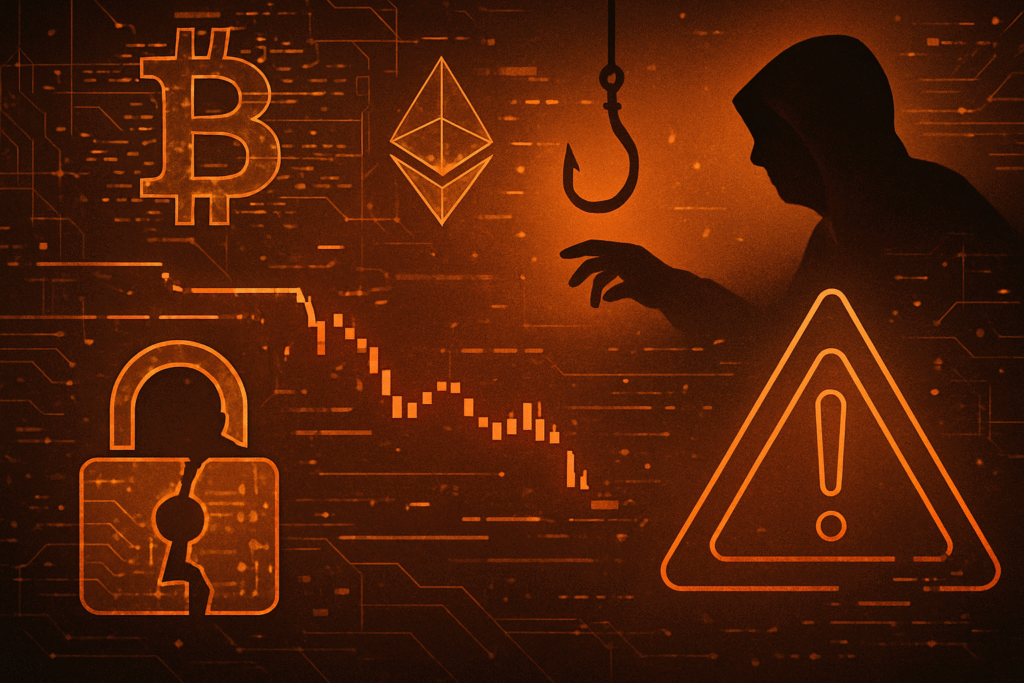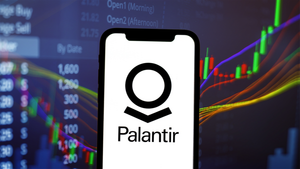
October 5, 2025 – Nearly three years after its cataclysmic collapse on November 11, 2022, the saga of FTX continues to unfold with a new and alarming chapter: a relentless wave of sophisticated phishing scams targeting its desperate creditors. As the FTX bankruptcy estate, led by CEO John Ray III, makes significant strides in asset recovery and begins distributing billions in repayments, cybercriminals are exploiting the anticipation and anxiety of those who lost funds, creating a treacherous landscape fraught with security risks.
The immediate market reaction to FTX's bankruptcy in late 2022 was one of shock and a severe downturn across the crypto ecosystem. While the broader market has largely moved past the initial shock, the ongoing phishing attempts now pose a direct threat to individuals hoping to reclaim their assets. This situation underscores a persistent vulnerability within the crypto space, highlighting how even in the aftermath of a major industry event, bad actors remain poised to exploit any opportunity, further eroding trust and complicating an already arduous recovery process. For the crypto ecosystem, these scams are a stark reminder of the critical need for robust security, transparent communication, and unwavering user vigilance, especially as the industry strives for mainstream adoption.
Market Impact and Price Action
The direct, measurable impact of these ongoing phishing scams on the overall cryptocurrency market prices, trading volumes, or specific token liquidity has been minimal as of October 5, 2025. Major cryptocurrencies like Bitcoin (BTC) and Ethereum (ETH) tend to react more to macroeconomic factors, significant regulatory news, or large-scale repayment events rather than individual scam incidents. However, the cumulative effect of persistent negative news, particularly regarding security breaches and fraud, undeniably contributes to a broader sentiment of distrust and vulnerability within the crypto space.
Indirectly, these scams significantly affect investor confidence. The constant barrage of warnings from FTX and its claims agent, Kroll Restructuring Administration, reinforces the perception that digital asset users are prime targets for exploitation. This environment of heightened risk can deter potential new entrants and make existing investors more hesitant, thereby hindering the market's long-term growth. The association of the crypto industry with criminality and fraud, exacerbated by the FTX collapse and these subsequent scams, continues to be a significant hurdle for mainstream acceptance.
The native token of the defunct exchange, FTT (FTX: FTT), currently trades around $0.94 – $0.95 USD, with a 24-hour trading volume of approximately $7.19 million and a market capitalization of roughly $305.99 million. It's crucial to remember that a bankruptcy judge declared FTT's value as "zero," and the FTX estate may liquidate FTT to pay creditors. The token's price movements have been largely speculative and reactive to news concerning the bankruptcy proceedings and repayment timelines, rather than directly influenced by the phishing scams. For instance, FTT saw a substantial surge of over 50% in October 2024 after FTX received court approval for its bankruptcy plan, and another 70% spike in late September 2025 fueled by rumors of new distributions. These movements highlight FTT's volatility and its detachment from fundamental utility, serving more as a speculative instrument tied to the recovery narrative.
Community and Ecosystem Response
The crypto community has responded to the FTX creditor phishing scams with a mix of frustration, heightened vigilance, and a strong emphasis on collective action. On platforms like X (formerly Twitter) and Reddit (particularly r/FTXOfficial), users actively share examples of fraudulent emails and websites, warning fellow creditors and dissecting new scam tactics. This rapid dissemination of information has become a crucial defense mechanism, though the sheer volume of attempts has led to a palpable sense of exasperation among those awaiting their funds.
Crypto influencers and thought leaders have consistently amplified warnings, stressing the importance of relying solely on official communication channels and never divulging sensitive information like recovery phrases. While some influencers previously faced scrutiny for promoting FTX without disclosing compensation, the current focus is on promoting cybersecurity best practices and educating the community.
Official entities, including the FTX Debtors (@FTX_Debtors on X) and Kroll Restructuring Administration, have repeatedly issued explicit warnings, advising claimants to remain vigilant, avoid unsolicited links, and meticulously verify sender addresses and website URLs. They emphasize that FTX will never ask users to connect their wallets directly via email. While specific DeFi protocols or Web3 applications haven't issued direct statements solely in response to these particular scams, the broader environment of increased cyber threats, partly underscored by the FTX collapse, has driven the entire Web3 ecosystem to enhance security measures, user education, and implement more robust smart contract audits and decentralized identity solutions.
The prevailing sentiment regarding security and creditor recovery is one of heightened caution and, for many, a deep-seated distrust. Creditors are particularly critical of the bankruptcy plan's decision to base reimbursements on crypto prices from November 2022, feeling shortchanged given the market's significant appreciation since then. This has led to a common sentiment of being "scammed twice." The ongoing threats reinforce the need for self-custody and robust personal security, while also spurring calls for better industry-wide education and more stringent regulatory oversight to protect investors from both internal malfeasance and external cyberattacks.
What's Next for Crypto
The ongoing FTX creditor phishing scams carry significant short-term and long-term implications for the crypto market, particularly concerning security and investor protection. In the short term, these scams continue to erode investor trust, complicate the FTX recovery process, and intensify regulatory scrutiny. The repeated targeting of creditors, especially during repayment rounds, creates additional administrative and emotional burdens for victims.
Long-term, if left unchecked, the persistence of such sophisticated scams could lead to a sustained erosion of confidence in the decentralized finance (DeFi) sector and the broader cryptocurrency industry. This could deter new investors and push existing users towards more centralized, regulated platforms, potentially challenging the core ethos of decentralization. However, this crisis is also a powerful catalyst for change. It is expected to accelerate the demand for comprehensive regulatory frameworks globally, pushing for stricter data handling, enhanced consumer protection laws, and even global harmonization of crypto regulations.
From a technological standpoint, these scams will necessitate the evolution of cryptocurrency security. This could lead to the widespread adoption of enhanced multi-factor authentication (MFA) beyond SMS, decentralized identity solutions, and advanced AI-powered phishing detection and prevention tools. Industry best practices will likely include more extensive public awareness campaigns, standardized incident response frameworks, and mandatory security audits for all crypto projects. Projects that prioritize robust security infrastructure, transparent communication, and proactive regulatory engagement are most likely to thrive.
For investors, strategic considerations include exercising extreme vigilance against unsolicited communications, strictly adhering to official communication channels for FTX updates (claims.ftx.com), and utilizing secure asset storage solutions like hardware wallets. The "cat-and-mouse" game between scammers and security measures is likely to intensify, requiring continuous user education and adaptation. While the FTX recovery progresses, the shadow of these scams will persist, forcing the industry to confront its security vulnerabilities head-on.
Bottom Line
The FTX bankruptcy aftermath, exacerbated by persistent and sophisticated phishing scams targeting creditors, serves as a profound and ongoing lesson for the cryptocurrency ecosystem. The key takeaway for investors and enthusiasts is the absolute necessity of extreme vigilance. Scammers are leveraging data breaches (some potentially originating from Kroll Restructuring Administration, FTX’s claims agent), advanced AI, and the emotional distress of creditors to craft highly convincing fraudulent emails and websites. It is paramount to rely only on official communication channels (e.g., claims.ftx.com, ftxquestions@kroll.com, @FTX_Debtors on X) and never to share private keys, recovery phrases, or connect external wallets to any platform in response to unsolicited requests.
The long-term significance of these events for crypto adoption and the industry's reputation cannot be overstated. The FTX scandal severely damaged public trust in centralized crypto entities and fueled widespread skepticism, associating the industry with fraud. While the efficient recovery of assets by the FTX estate (recovering up to $16.5 billion) is a positive development, the ongoing scams undermine efforts to rebuild confidence. For crypto to achieve widespread mainstream adoption, the industry must prioritize security, transparency, and regulatory compliance. A balanced regulatory approach that protects investors without stifling innovation will be crucial.
Ultimately, the trajectory of crypto adoption hinges on the industry's ability to learn from these painful lessons, mature its security practices, and foster an environment of integrity. The "not your keys, not your crypto" mantra has gained renewed significance, pushing for greater self-custody and decentralized solutions.
Important Dates, Events, or Metrics to Monitor (as of 10/5/2025):
- October 2024: FTX's Chapter 11 reorganization plan approved.
- January 3, 2025: Effective date for the reorganization plan; distributions began within 60 days.
- February 18, 2025: Initial distributions began for "Convenience Class" creditors (claims under $50,000), receiving 120% of their initial claim value.
- May 30, 2025: Second round of repayments started, distributing $5 billion to larger creditors (72.5% of initial claim value).
- September 30, 2025: FTX distributed an additional $1.6 billion to creditors as part of its third round of payments.
- Q4 2025 and into 2026-2027: Expected timeframe for the next repayment round, aiming for the remaining 27.5% of claims plus post-petition interest.
- Ongoing Security Risks: Vigilance for persistent phishing attacks, especially around future distribution dates. Monitor any further news regarding data breaches affecting Kroll or other claims agents.
- Key Metrics: Total recovered assets (currently over $7.8 billion distributed, aiming for up to $16.5 billion), remaining repayment amounts (over $4.2 billion still awaited), and the resolution of legal challenges (e.g., payout restrictions in 49 jurisdictions).
This article is for informational purposes only and does not constitute financial or investment advice. Cryptocurrency investments carry significant risk.




